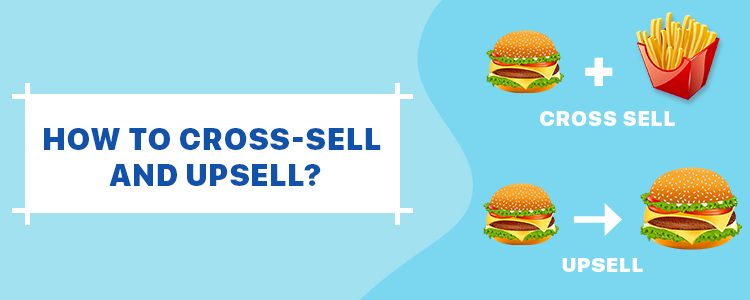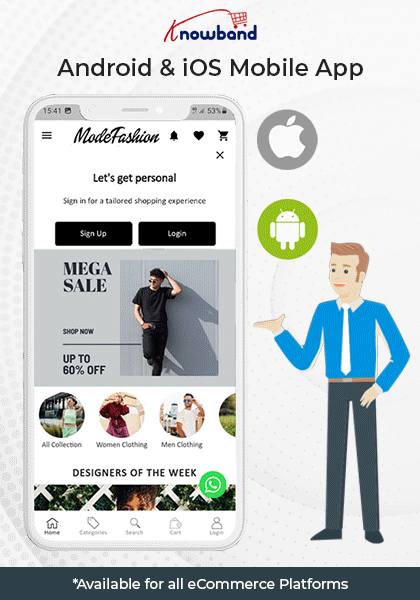You do not always require cold calling or sending the bulk of emails to close a deal or make higher sales. If you know how to Upsell and Cross-sell, it makes your job easy.
Cross-selling and Upselling are marketing strategies that provide you with an excellent opportunity to earn more revenue or make more money from your existing customers. If implemented well, it can boost your sales by a significant margin.
Research says that it is 5-25x times more challenging to acquire a new customer than retaining an existing one. It is because existing customers are already familiar with your brand. If they are satisfied with your products or services, they will likely visit your website again in the future and spend more.
On the other hand, acquiring a new customer is challenging because they have never interacted with your brand before and will take time to get familiar.
This is why Upselling and Cross-selling are considered the best practices to get sales from your existing customers as they give the best ROI.
Let’s dig further and understand the cross-selling and upselling techniques.
What is Cross-selling?
Cross-selling is a tactic to encourage customers to purchase related products along with the primary product. For example, if a customer has purchased or is purchasing an iPhone, he/she can be recommended to purchase Apple Airpods along with it.
This fits well with the product which he/she initially came to buy, right? If they are buying an iPhone, they would love to have Airpods to listen to music which usually costs around 235 USD. This added $235 in the order value reflects cross-selling.
What is Upselling?
Upselling is the marketing tactic to encourage customers to purchase a higher end-product than the one they are primarily purchasing. For example, when you purchase any tool, it usually comes with a basic plan and a premium plan; which obviously has got more features.
The basic plan is set by default during the purchase but you push customers to upgrade to the premium plan to enjoy more benefits; that is Upselling.
Difference between Cross-selling and Upselling
From the above-mentioned definitions, we can conclude that the cross-selling involves pushing customers to purchase products relevant to the primary purchase while upselling involves persuading customers to buy a more expensive or premium version of the product.
This is the difference, but both Upselling and Cross-selling have a similarity, i.e., both tend to increase the average order value.
Studies suggest that Upselling is more effective than Cross-selling as it is easier to convince someone to upgrade to a premium plan than convincing them to purchase a related and new product.
4 Ways to Cross-sell and Upsell
Some of the best practices to cross-sell and up-sell are-
1. Know Your Audience
You may be aware of the buyer persona but it’s important to understand your audience and know them more once they have purchased your product. Analyze their shopping behaviour, use demographic information, and collect their feedback to understand their motives and challenges to present them with the most useful products that you could upsell and cross-sell.
2. Be a Good Listener
When you try to cross-sell or upsell your products or services to your customers over call, make sure that you do not go gaga over it. Customers will find out within seconds that you are just calling to take out money from their pocket if you keep bragging about how good your products are.
Be a good listener. Ask if they had a good experience with their previous purchase. Do not be in a rush to pitch. If they have something to tell, be it a wish, a suggestion or a complaint; listen to it carefully and then mention how your products or services can be helpful for them to get what they want.
3. Provide a Relevant Solution
You need to understand that cross-selling and upselling needs to be done in the right manner, only then it will be useful and bring results. Until and unless what you are offering is helpful to the customers on their current or recent purchase, it would not bring any positive outcome.
Track the customer’s purchase history. Go through their journey. Then review your product offerings and identify how it can provide a solution to the challenges your customers would be facing.
4. Use Remarketing Tactics
Remarketing is the best way to automate cross-selling and upselling and involves minimum efforts. Once you have set up your remarketing campaign, run some ads.
Configure remarketing campaigns across various social networks as that’s where your possible target audience would be.
Through remarketing, customers are shown ads on different platforms about products which they intended to purchase or it can also be used to display some related products which could complement with their recent purchase.
Final Thoughts
Ecommerce websites can use upselling and cross-selling to suggest products based on consumer’s search, clicks and their purchase history.
Knowband provides a few modules that help you encourage cross-selling and upselling on your website, such as Related Products module and Thank You Page module.
Check out the module for complete features and benefits. I hope this article helped you understand the concept of cross-selling and upselling.



